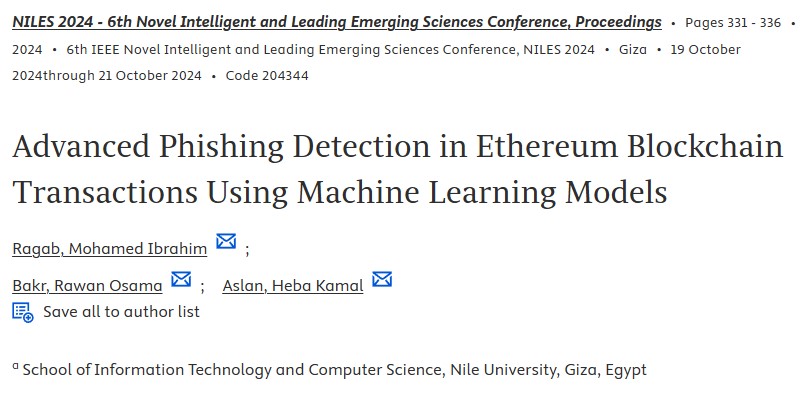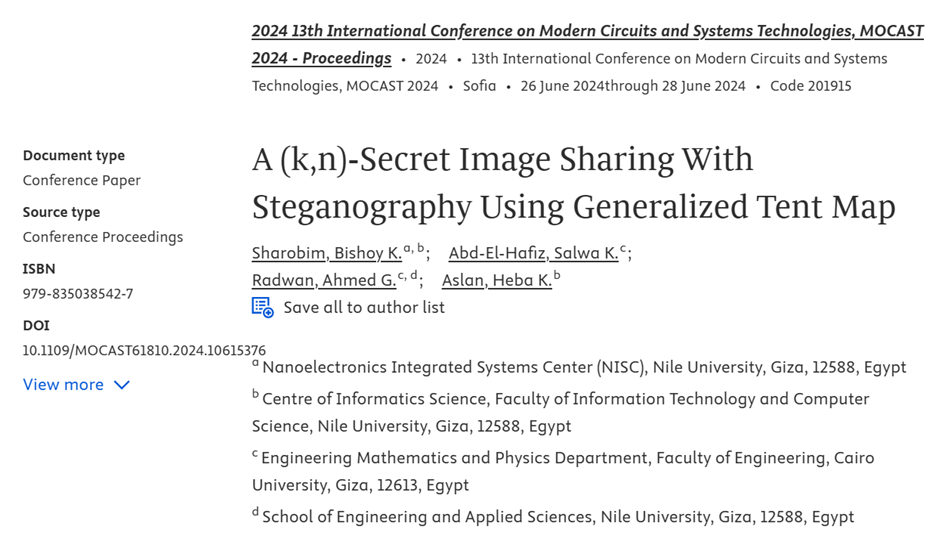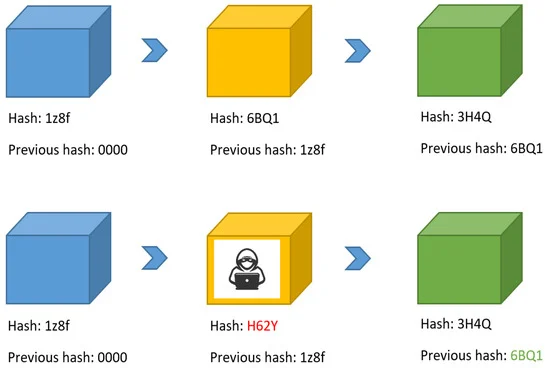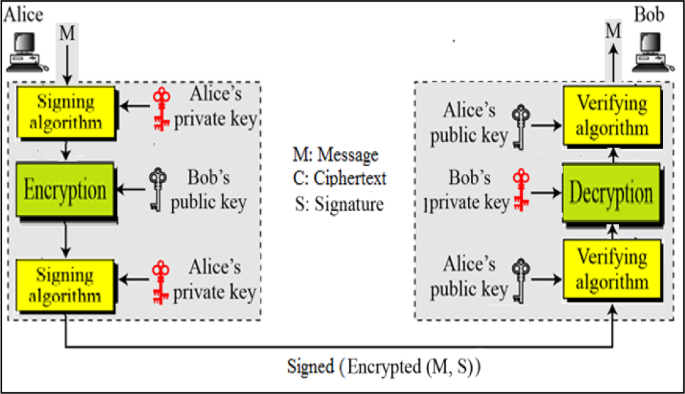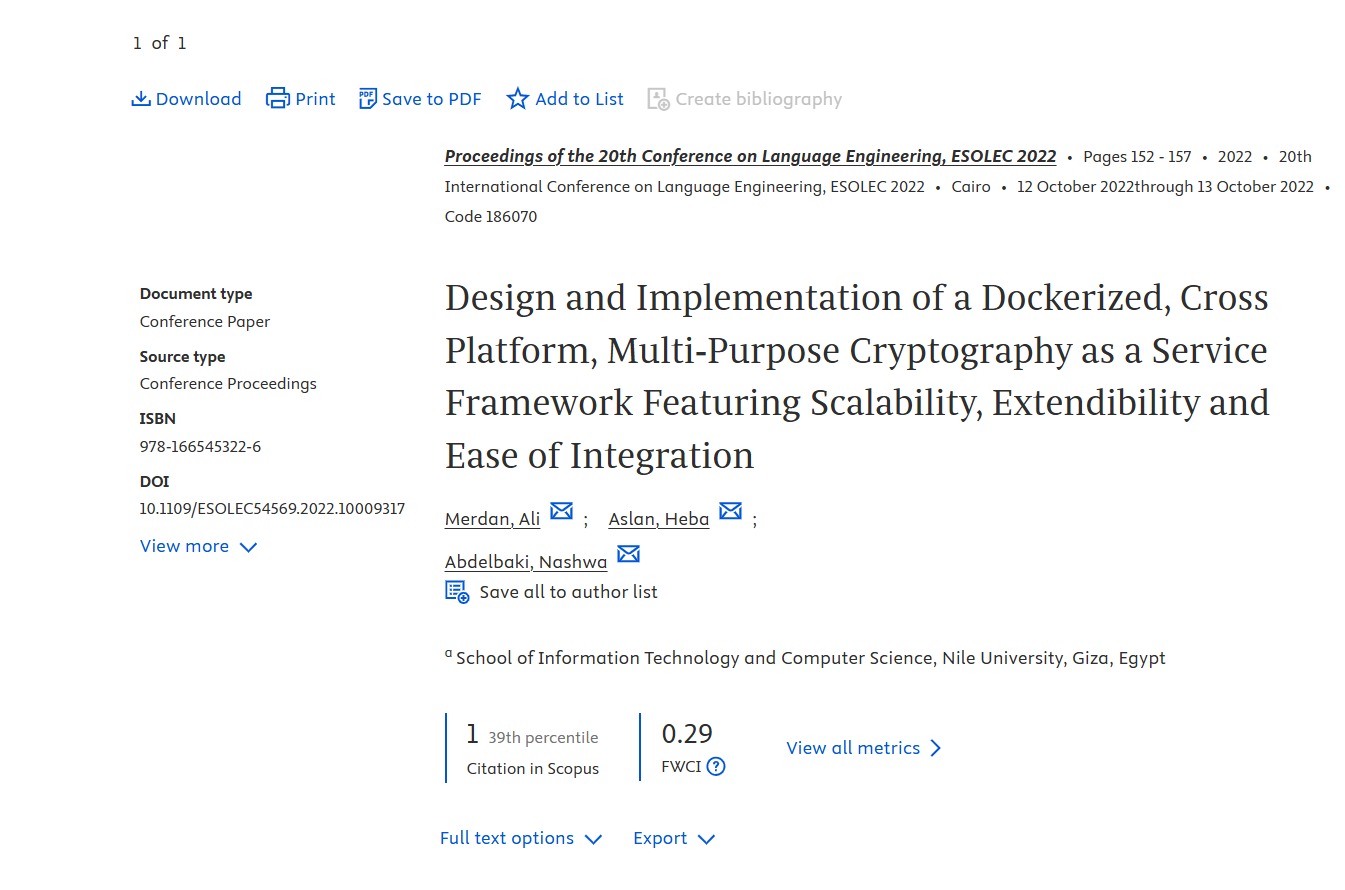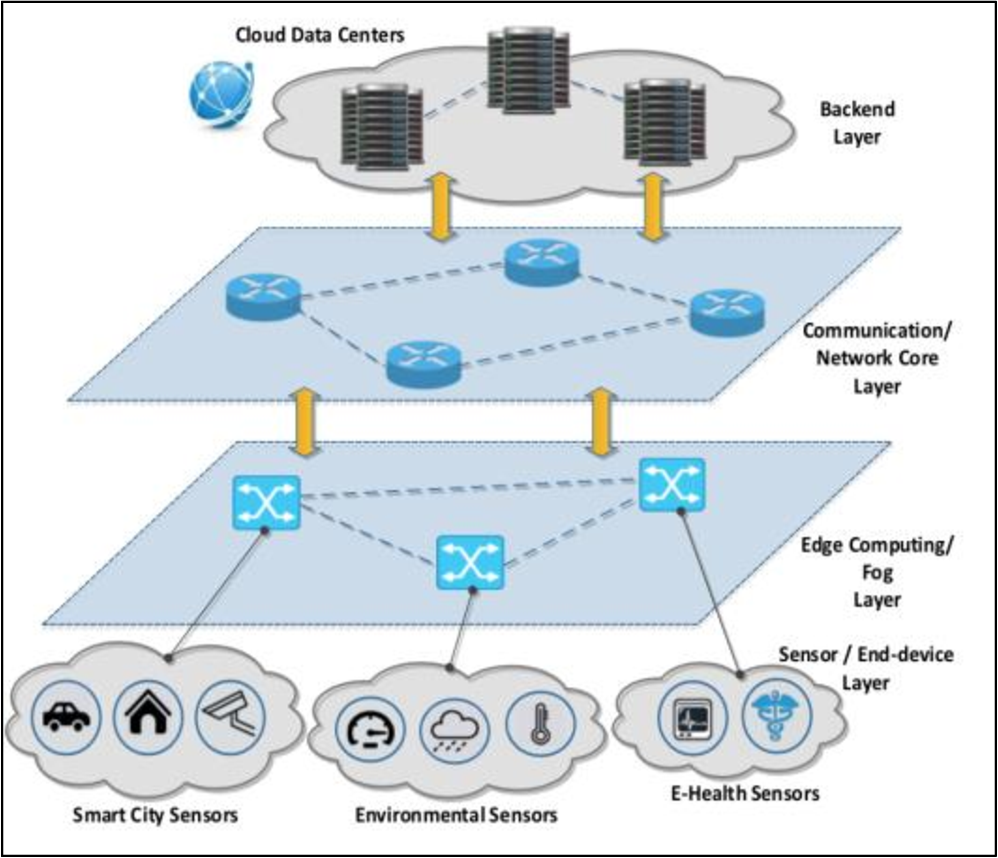Biography
Prof. Heba Kamal Aslan is a Professor at Nile University and Electronics Research Institute, Cairo-Egypt. She received her B. Sc. degree, M. Sc. degree, and Ph. D. degree from Faculty of Engineering, Cairo University, Egypt in 1990, 1994 and 1998 respectively.
Her research interests include Key Distribution Protocols, Authentication Protocols, Logical Analysis of Protocols, Blockchain Applications, Quantum Cryptography, and Intrusion Detection Systems.
Achievements
- Organizing Committee member of: 11th International Conference on Model and Data Engineering (MEDI2022)
- Co-Editor of the proceeding of: IFIP TC11 17th International Conference on Inforation Security (SEC2002)
- Member of: “Globally-Asynchronous Locally-Synchronus (GALS)- based Programmable Low-Power High-Performance Security Processor”, Project funded by NTRA, 2016.
- Principal Investigator of: “Hardware Simulation of Rijndael: the New Advanced Encryption Standard”, Internal Project (supported by Electronics Research Institute), 2002.
Research Tracks
- Lightweight Cryptography
- Post-Quantum Cryptography
- Secure IoT Applications
- Secure Applications using Blockchain.
- Intrusion Detection Systems
- Security of Multicast/Unicast Communication




